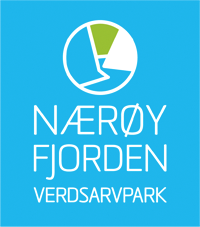Status of the common good financing project
Status of the common good financing project
After a thorough assessment of many alternative solutions that can be used for both visitor contributions and dynamic visitor management, the project is now moving forward with the concretization of models using sign reading technology for road crossing and parking, combined with payment from transport alternatives such as cruises, boats, buses and trains, for dynamic payment up to the border, geographical pressure area linked to natural and cultural areas such as world heritage sites, national parks, cultural conservation areas, national tourist trails etc. based on the introduction of The "Svalbard model" on the mainland:
Should not be a tax or levy for the industry or residents, but a direct contribution from visitors to take care of and facilitate visits to areas that experience high pressure.
Shall contribute to the environment and sustainability, active nature and cultural conservation and the best experiences for visitors and the local population: "the best for the environment, the local community and the visitor" and "a good place to live, a good place to visit"
Such an arrangement requires national anchoring , but with local administration . Approaching the "Svalbard model" on the mainland is linked to the fact that certain areas on the mainland have special challenges with visitors. For such areas, a visitor's contribution can be useful to regulate traffic into the area and to obtain funds that can be used to develop the area to the best of visitors and residents. The visitor's contribution should apply to everyone who enters the area by other means than on foot and by bicycle, and exceptions can be made for permanent residents and the level of the fee can be differentiated according to the time of day and time of year. See the reports Note on possibilities for implementation of the "Svalbard model" and environmental fees on the mainland (Advokatfirmaet Selmer AS, 9 July 2020) and Project public good financing - summary (Advokatfirmaet Selmer AS, note, 12 October 2020) for more detailed information on the possibility of establishment of the "Svalbard model" on the mainland.
The project is now working further with three strategic races where we wish to inform and involve NHO reiseliv, Virke, Norwegian tourism, destinations, municipalities, county municipalities and others. widely nationally, and look at the possibility of pilot testing in other relevant exposed natural and cultural areas outside the World Heritage area:
1) Prepare a draft of the content of the pilot testing (including legal texts, regulations, administration and argumentation)
2) Anchor the draft with NFD and KLD for further elaboration and promotion of proposals for the Storting, and implement the work in a new, national tourism strategy (Innovation Norway/Government)
3) Present the draft to the government party and the other parties at the Storting
The aim is to have pilot testing at selected locations from 2021/2022. The pilot testing could last for 3-4 years, with three stages for development, testing and establishment of a final model for public good financing:
1) Model: prepare proposals for a model for pilot testing
2) Testing: pilot testing for trials in the world heritage area and selected pressure area
3) Evaluation: evaluate, adapt and establish a national model
Stage 2) Pilot testing requires funding and organization of development work and a parallel R&D project for testing, evaluation and modelling. The ministries and the Storting must consider whether an NOU for common good financing is desired in parallel with the pilot testing.
The project has carried out an R&D project financed by the Regional Research Fund in Western Norway with clarification of:
AP1 Local prerequisites for public goods financing (interview with stakeholders around Nærøyfjorden World Heritage Park and Geiranger World Heritage Area)
AP2 Specification of management models and legislation (collaboration with Advokatfirmaet Selmer AS)
AP3 Clarification of technological solutions (use of mobile technology, sign recognition and satellite-based technology).
The following new reports have been prepared in the project in 2020 (see all the reports in the project here ):
Legal issues related to possible technological solutions for common good financing (Advokatfirmaet Selmer AS, report 169365-502, 29 May 2020)
Technologies for public good financing (Vestlandsforsking, report 4/2020, 29 June 2020):
Note on possibilities for implementing the "Svalbard model" and environmental fees on the mainland (Advokatfirmaet Selmer AS, 9 July 2020)
Local requirements for common good financing in the Geirangerfjord and Nærøyfjorden world heritage sites (Vestlandsforsking, Vestlandsforsking note no. 5/2020, 28 September 2020)
Project joint good financing – summary (Advokatfirmaet Selmer AS, memo, 12 October 2020)
The project aims to develop models with national relevance and transfer value, where national connection and support for pilot testing is important so that the tourism industry can collectively stand behind the development of future models for visitor contributions and visitor management.
The project participants are:
Vestland County Municipality, Møre og Romsdal County Municipality, World Heritage Council for the Western Norwegian Fjord Landscape, Geirangerfjorden World Heritage Foundation, Nærøyfjorden Verdsarvpark, Sogn regional council, Stranda municipality, Norddal municipality, Visit Sognefjord AS and Geiranger development, but we encourage all destinations, municipalities, county municipalities and organizations to get involved and support the project.

